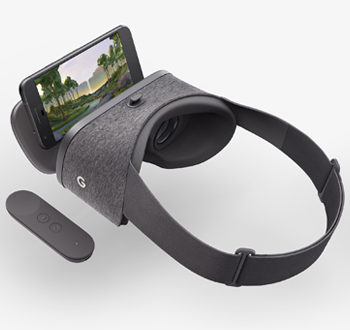Terms like ’emerging’ and ‘nascent’ have often been thrown about when it comes to talking about virtual reality (VR) and augmented reality (AR), but one thing that is for certain is that neither tech have really flown out of the blocks. That is set to change between now and 2021 according to research firm CCS Insight.
The new research says that though we’ve seen a relatively slow start to VR sales, the dedicated VR headset market will grow a frankly ridiculous sounding 800 per cent between 2017 and 2021 (not ridiculous for the prediction, but 800 per cent is a hell of a lot of growth), hitting 22 million units. As you’d expect, smartphone VR devices will deliver the lion’s share of unit volumes, and the firm expects 14 million smartphone VR headsets will be sold in 2017, rising to 25 million in 2018. Future growth is underlined by an expected fivefold volume growth from 2017 to 70 million by 2021. The segment will be worth $500 million in 2017, rising to approximately $1.4 billion by 2021. Wowsers.
Ben Wood, chief of research at CCS Insight, commented: "Headsets designed for smartphones are the entry point for most consumers when it comes to virtual reality. Google’s Cardboard devices and Samsung’s Gear VR headsets have been the early market makers in this area. We expect the momentum to continue at Mobile World Congress next week, with Google’s Daydream headsets being a prominent part of many high-end smartphone launches".
Dedicated VR headsets such as the HTC Vive and Sony PlayStation VR have seen lower sales than expected – 1.2 million compared to the predicted 2 million. As previously mentioned, this market is expected to skyrocket to 22 million units by 2021, resulting in the market being worth $7.7 billion.
Wood commented: "There’s no doubt that dedicated VR headsets can be a tough sell. The complete package of the headset and a high-end PC is out of reach for most consumers and even the PlayStation VR, which can be used with the PS4 games console, has failed to meet expectations. There’s a lot of work to be done on all aspects of the experience, but we still believe there’s tremendous potential".
He added: "The technology continues to improve dramatically and 2017 will see the emergence of untethered solutions that will be more immersive than ever. Audiences will have access to a more diverse range of ever-richer content and experiences that we believe will further boost the market. The proliferation of VR experiences in theme parks, at cinemas and in other locations such as car showrooms and travel agents offering ‘look before you book’ experiences will only serve to educate users on the potential of the technology”.
This new forecast estimates that both of those VR markets will combine to be worth $1.5 billion in 2017, rising to $9.1 billion by 2021. The higher cost of dedicated headsets will see them accounting for 85 per cent of total market value despite making up only 24 per cent of unit sales. CCS Insight believes that by 2019 dedicated VR devices will start offering a meaningful revenue contribution to companies that have commercial products in this area.
Meanwhile, the research company also says that the AR devices market will be a bit slower to catch on, with the first significant unit sales only occuring in 2019, when it expects 1.5 million units will be sold, rising to 5 million in 2021 with a total market value of $2.5 billion.
Wood noted: "Although there are numerous very promising field trials underway, mass deployments of AR devices remain elusive, with a mere 100,000 units sold in 2016. The focus on enterprise uses and vertical market opportunities means longer sales cycles, exacerbated by the complexities of integration and compliance in workplaces. We don’t expect meaningful sales of AR headsets to start until the early 2020s".
So basically don’t write VR and AR off yet.
 PCR Tech and IT retail, distribution and vendor news
PCR Tech and IT retail, distribution and vendor news




